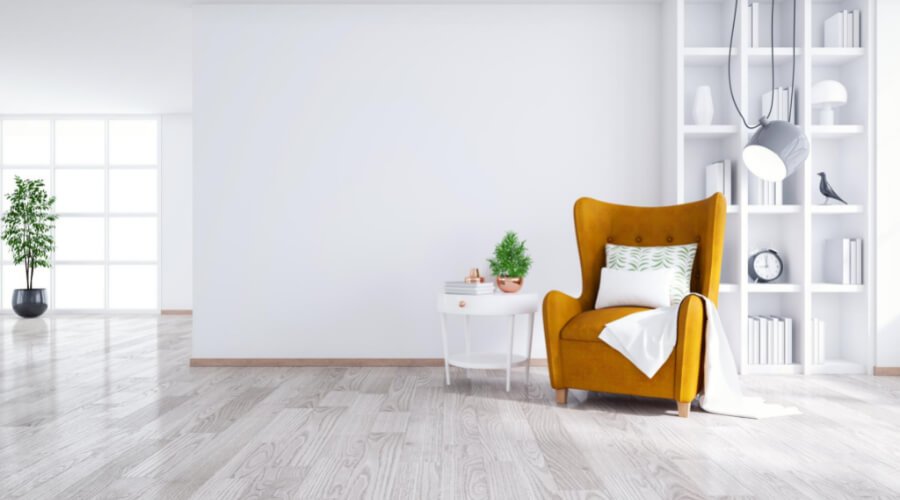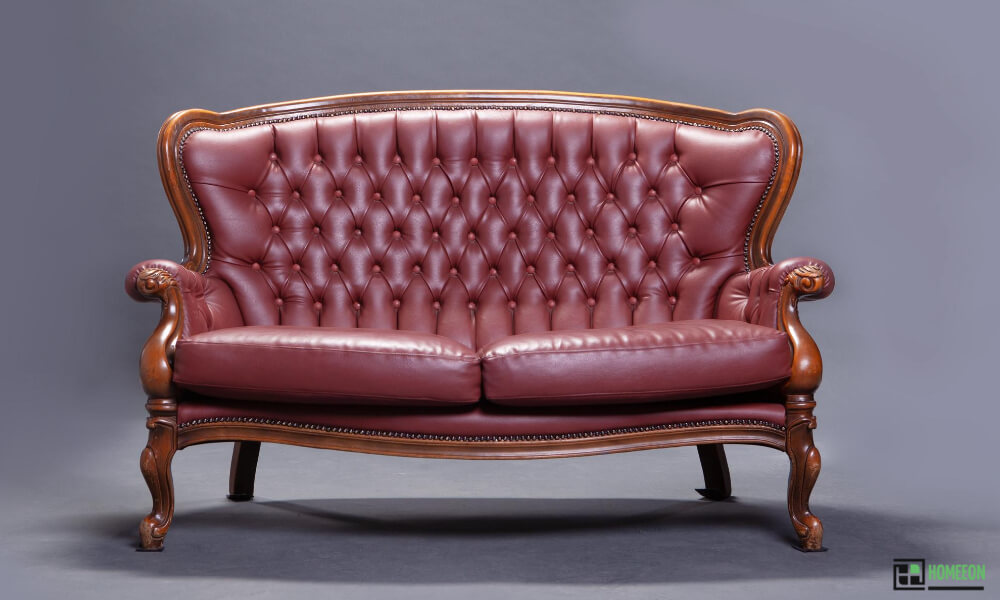Last Updated on July 13, 2023 By Emma W. Thomas
Horsehair has been historically used in upholstery for sofas and other furniture. It has been favored for its durability, resilience, and ability to create a firm and supportive seat. However, in modern times, the use of horsehair in upholstery has become less common due to ethical concerns regarding the sourcing of horsehair. Synthetic materials and other natural fibers have become more prevalent alternatives.
What Is The Horsehair Upholstery Of A Sofa?
Horsehair upholstery refers to the stuffing material for the cushions and padding of a sofa or chair. It is made from the mane and tail hairs of horses, which are collected, cleaned, and processed. The horsehair is either used as the primary stuffing material or combined with other materials like cotton or foam.
History and tradition:
- Horsehair upholstery has been in use since the 17th century and was particularly popular during the Victorian and Edwardian eras.
- It gained popularity due to its durability, resilience, and ability to retain its shape over time.
- The craftsmanship involved in working with horsehair has been passed down through generations, making it a traditional and skilled trade.
Benefits of horsehair upholstery:
- Durability: Horsehair is incredibly durable and can withstand years of use without sagging or flattening.
- Resilience: Horsehair has a natural springiness, which helps the sofa retain its shape and bounce back after use.
- Breathability: The natural fibers of horsehair allow air to circulate, preventing mold and mildew growth.
- Temperature regulation: Horsehair helps to regulate temperature by absorbing moisture and releasing it gradually.
Horsehair Used Apart From The Upholstery For Sofas

Horsehair, commonly known for its use in upholstery for sofas, has a wide range of applications beyond its traditional use. This versatile material, derived from the manes and tails of horses, is cherished for its strength, durability, and natural characteristics. Here are some unique ways in which horsehair is utilized outside of the upholstery industry:
- Musical Instruments: Horsehair is a crucial component of high-quality bows used in string instruments such as violins, cellos, and basses. Its unique elasticity, combined with its ability to grip the strings, produces rich and resonant tones.
- Brushes and Brooms: Due to its excellent durability and flexibility, horsehair is used to create brushes and brooms for various purposes. These brushes are commonly used in art studios, workshops, and even for personal grooming, offering a gentle yet effective way to clean and maintain different surfaces.
- Textiles: Horsehair is incorporated into fabrics to enhance their strength and structure. By blending horsehair fibers with other materials like cotton or silk, textiles gain a unique sheen and resistance to wrinkles. These fabrics are often used in high-end fashion, creating luxurious garments and accessories.
- Craftsmanship and Decorative Items: Horsehair is frequently employed in the creation of intricate decorative items such as tassels, fringes, and braids. These elegant additions can be found on home furnishings like curtains, lamp shades, and cushions, offering a touch of sophistication and Old World charm.
- Upholstery and Padding for Furniture: While horsehair is well-known for its use as upholstery in sofas, it is also utilized for padding in a variety of furniture items such as chairs, headboards, and ottomans. The natural springiness and resilience of horsehair provide exceptional comfort and ensure long-lasting support.
Types Of Upholsteries
There are three types of upholstery: residential, marine, and commercial.
1. Marine Upholstery
This type deals with water bodies, as the word suggests. The fabric chosen in this situation should be highly resistant to mold, durable, and fade-resistant.
2. Commercial Upholstery
Involves large-scale furniture production for different areas, hospitals, and gymnasiums, to mention a few.
3. Residential Upholsteries
Involve the furniture in the living room where we stay. It is of a small scale. According to the owner’s preference, these sofas are woven in different horsehairs colors. This provides room for the customization of the sofas into different curves according to your needs and preferences.
Materials Used In Upholstering A Sofa

When it comes to upholstering a sofa, there are several different types of materials that can be used to achieve the desired look and comfort level. The choice of materials depends on various factors, including personal preference, budget, and durability requirements. Here are some common materials used in the upholstery process:
- Fabric: Fabric is the most popular choice for sofa upholstery due to its wide variety of colors, patterns, and textures. It is also relatively affordable and easy to clean. Common fabric options include cotton, linen, synthetic blends, and microfiber.
- Leather: Leather upholstery adds a touch of elegance and luxury to a sofa. It is known for its durability and natural beauty. Genuine leather is often more expensive than fabric but offers a longer lifespan. There are also synthetic leather options available, which are more affordable and easier to maintain.
- Velvet: Velvet is a plush and soft fabric that gives a sofa an opulent and luxurious feel. It is available in a wide range of colors, making it a popular choice for classic and contemporary designs. However, velvet may require more maintenance and care to keep it looking its best.
- Faux Fur: For those who want to add a cozy and warm touch to their sofa, faux fur upholstery can be a great option. Faux fur is not only stylish but also easy to clean and maintain. It can instantly transform a sofa into a statement piece.
- Vinyl: Vinyl upholstery is a practical choice for families with young children or pets, as it is highly resistant to stains and easy to clean. It is also an affordable alternative to leather and can mimic its look quite convincingly.
- Foam and Cushioning: While not technically a material used for the outer upholstery, foam, and cushioning are essential components of sofa comfort. Different densities of foam and various types of filling materials, such as feathers or polyester fibers, are used to provide the desired level of support and softness.
Why Is Leather The Most Durable Material For Sofa Upholstery?
Leather is probably the most durable upholstery for a standard sofa for the following reasons:
1. Durability
For his reason, leather can withstand tension, and wear and tear relatively well compared to other fabric materials. It is advisable that in a family of small children and pets, the sofas should have leather fabrics. Leather is sophisticated and can be polished and altered into many colors depending on the buyer’s preference or the sofa’s owner.
2. Water-Resistant
This prevents the sponge and delicate parts of the sofa from absorbing unwanted water, leading to damage. It is also easy to eliminate tiny hairs from leather making it generally easier to maintain.
3. Leather Is Soft
Surprisingly, it becomes even smoother as time goes by. This makes it look and feel comfortable. Unlike other materials, which seem to fade after some time, leather maintains its color and softness.
Is Horsehair Still Being Used In Upholstery?
In some areas, horsehair is still being used in upholstery; however, with increased technological advancement, horsehair is quickly being replaced with cheaper synthetic fibers produced in large quantities to sustain the large population. Being expensive to purchase, the rate at which horsehair is being used in stuffing sofas keeps on reducing as time goes by.
Additionally, the use of feathers and downs has significantly reduced due to the high maintenance of the required cushion. They require constant fluffing of the feathers and downs into the cushion after a short period. This is very expensive for the owners. That is why synthetic fibers (polyurethane foams) have risen to the occasion.
When Did Upholsterers Stop Using Horsehair?
Polyurethane foams began to replace horsehair across most home furnishing applications in the 1950s. Down and feathers were famous in high-end furniture for a few more decades. However, the high cost and disadvantage reduced their popular appeal.
The Cost Of Purchasing Horsehair For Sofa Upholstering
Significantly, horsehair prices depend on sizes and amounts. On many occasions, this cost is considered expensive for many people, and it is a sign of prestige and pride. Often, the rich are the ones in a position to afford this. Horsehair is primarily derived from stallions, and prices range between $150–$400 per pound due to the sorting required to extract long hairs. However, paying a qualified weaver to weave the horsehair to your desired style costs even higher. It is because they need a lot of time to do upholstering.
What Is The Source Of The High Cost Of Horsehair?
Although horsehair grows the same way sheep hair, horsehair cannot be harvested from a single animal in significant quantities. This is because not the whole body is covered with harvestable hair. Horsehair requires excellent caution to prepare it for weaving to insult injury.
What Is Horsehair Used For?
The lengthiest hairs are used often to make fabrics, while medium lengths are often used to create bristles for ink, light industry, and household brushes. Short hair is rolled up to stuff in soft furnishings and mattresses. The strings of violin bows are made of high-quality white horsehair.
Horsehair Fabric For Chairs And Sofas
Horsehair fabric is distinguished by its smooth sheen, timeless simplicity, excellent durability, and ease of maintenance, which blend understated elegance with exclusivity and history. Such natural hair material is perfect for using a sofa and chair upholstery fabric.
Horsehair is the epitome of fabric used in chairs and sofas for many reasons. It can withstand relatively high tension because it is challenging, smooth, and easy to maintain. It comes in a variety of colors which may also be dyed according to the owner’s preference. Horsehair is expensive to purchase compared to other alternatives because they are relatively harder to harvest than wool.
It is because only a tiny section of a horse grows harvestable hair while the whole body can produce wool. Horsehair can be woven into different shapes. This includes curves and right angles.
Durability Of Horsehair For Sofa Upholstery
The silky sheen, classic simplicity, high durability, and ease of maintenance are the distinguishing features of horsehair textile, which combines an elegant look with distinctiveness and tradition. This hair’s natural material is best suited for sofa and chair upholstery fabric.
Horsehair And Chair Upholstery
Horsehair, for example, is a mark of quality because it is tough, resilient, and considerably more expensive than the alternatives. It was employed in historical upholstery until the 19th century. However, its popularity continues to decrease with the emergence of modern ways of handling various types of furniture.
The Significance Of Using Horsehair For Sofa Upholstery
Unlike any other type of fabric, horsehair takes a longer time to weave, let alone prepare them. The weaver has a more significant advantage since they can obtain right angles, edges, and curves according to the owner’s preference. In addition to that, horsehair is usually of excellent quality. This makes it solid and durable. Since it is expensive to purchase, it is often seen as a source of pride and prestige by those who own sofas upholstered using horsehair.
What Is Horse Hair Upholstery Stuffing?
As a traditional stuffing, horsehair is the longest, hardest, and most long-lasting of all animal strands of hair used in domestic upholstery. Significantly, this factor contributes to its high prices.
Spinning Horsehair For Sofa Upholstery
It also depends on the breed of the horse. Some horses have very fine hair that cannot spin, but others have fluffy hair quickly turned and braided. The horse’s body hair cannot be rotated or braided, but the tail and mane can.
Before spinning horsehair for upholstery, wash it thoroughly in hot soapy disinfected water, then rinse in cold water. Next, dry it using hot air in a particular system once it is dry and ready for use. You can mix it with different colors for a specific machine for the desired outcome. Card it and leave it open after making the mixture dry before spinning.
During spinning, consider combing it and placing it in a drafting device. This will make the horsehair form strands that ease the upholstering process. A notable feature of the strand is the appearance of ringlets that lie on each other. Strands that become single strings and spiral hair strands spiral in shape.
The final process is passing the curled hair strands through hot steam and drying in an autoclave machine. The final process makes curls permanent in hair. The hair is then processed and stuffed in readiness to make mattresses and cushions. The sponginess enables the couch or sofa to be comfortable to sit on.
Final Thoughts
The use of horsehair in upholstering has dramatically reduced over the years due to many reasons. One of the main ones is that horses are not considered prestigious and are only owned by the rich with the high technology in motor vehicles. Strict laws have also been enforced to curb the destruction of horse lives. Horsehair is also scarce since horsehair grows in specific places, unlike sheep wool extends throughout the sheep’s body. This makes the quantity of hair harvested horseless. Despite all these, horsehair is expensive but has many uses even in upholstery.
References:
https://www.latimes.com/archives/la-xpm-2006-nov-02-hm-advice2-story.html
https://en.wikipedia.org/wiki/Horsehair
Emma is a graduate of Domestic Science or Family and Consumer Sciences (Home Economics) from the University of Wisconsin. She has 7 years of experience Working with the strategic section of BestBuy and now writing full-time for Homeeon.
From Managing the Home, Interiors, Cleaning, and Exteriors to Gardening and everything about Making A Home Liveable – is her passion and this Homeeon is the result of this.
Emma loves decorating her home with the best stuff found online. She cares about quality over anything and writes reviews about them here in Homeeon. Get in touch with her over Pinterest.
Keep reading her blogs.

